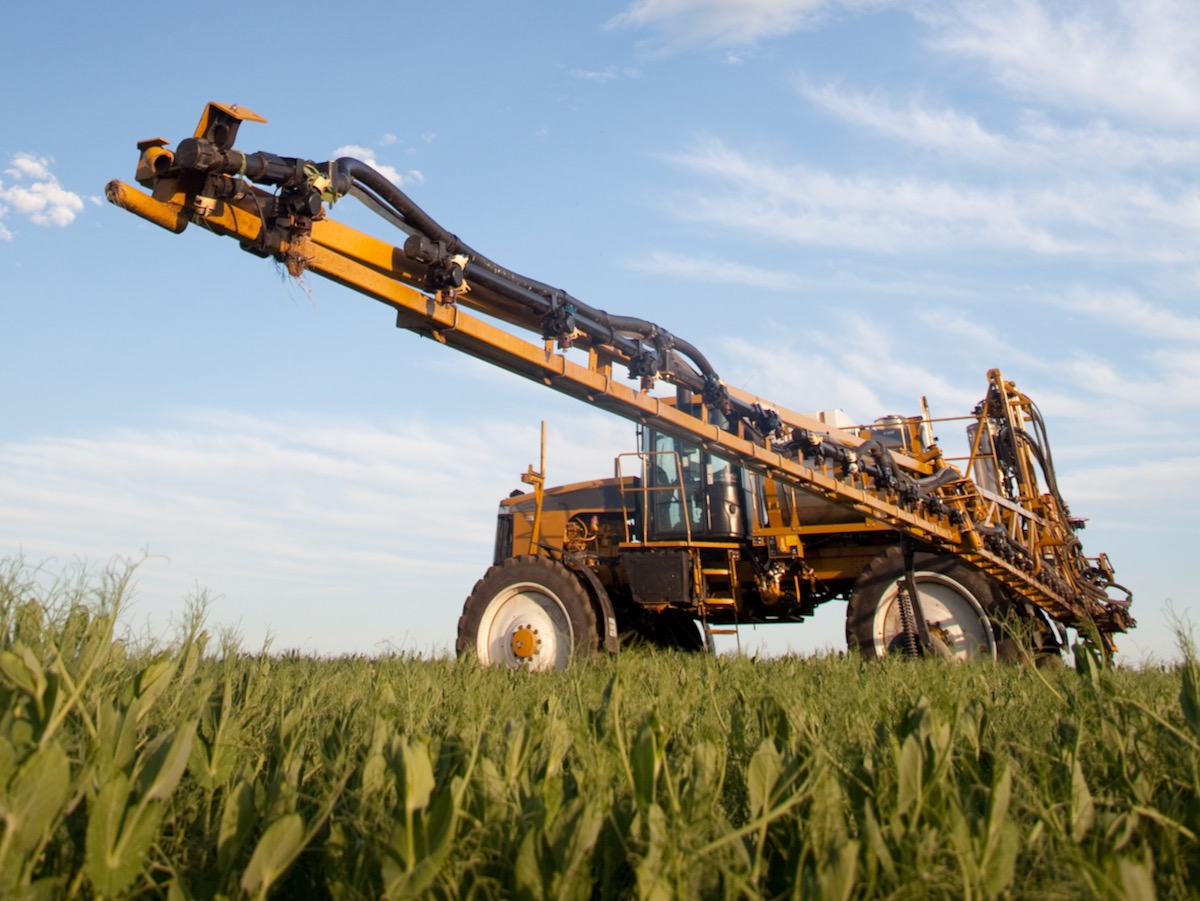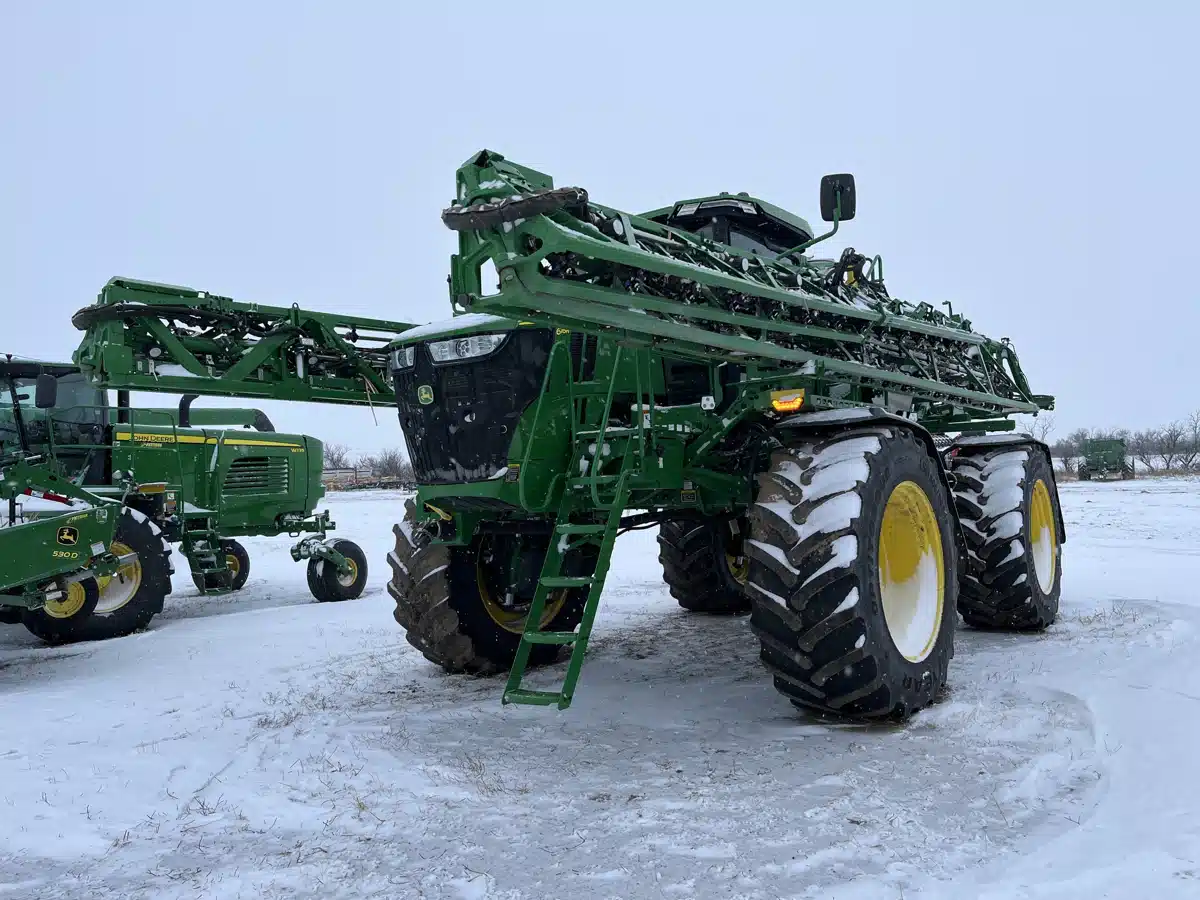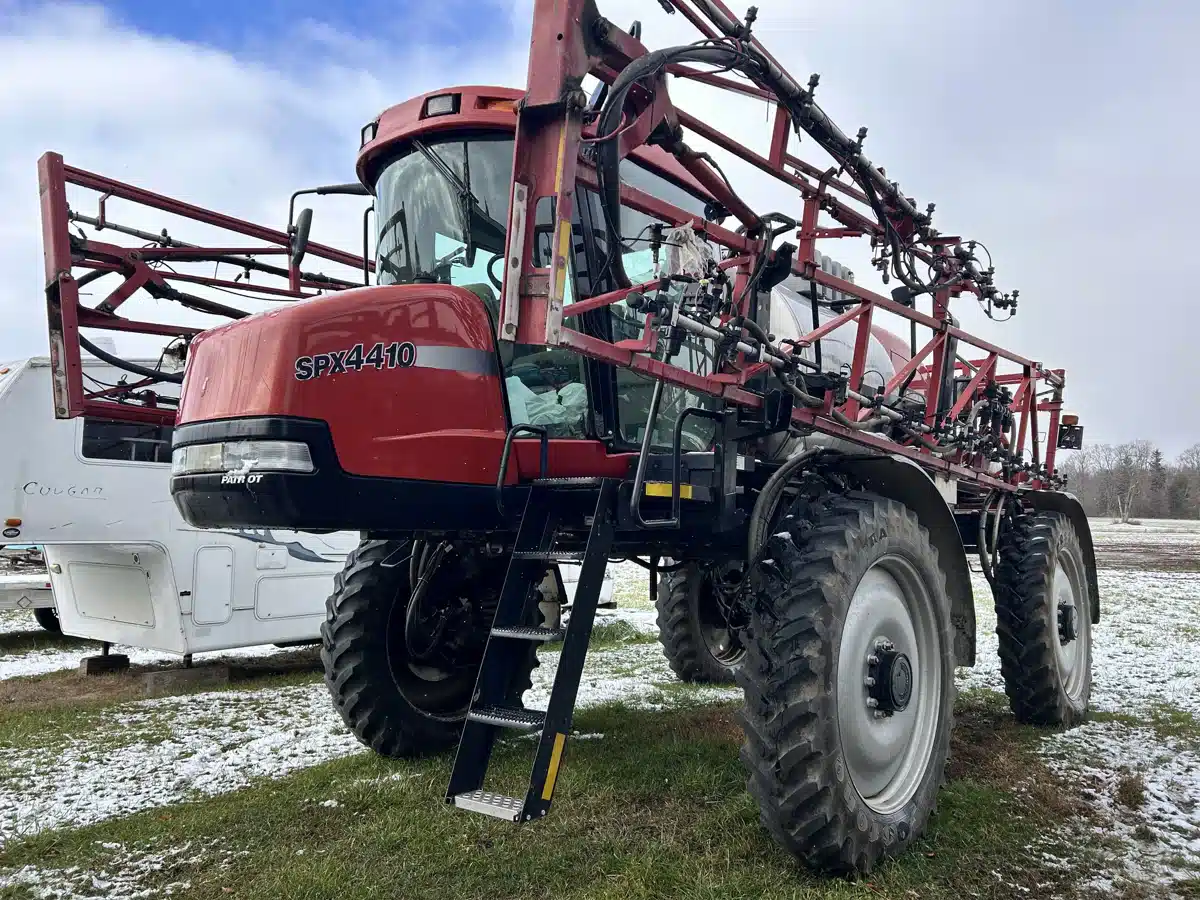With herbicide resistance on the rise, farmers can no longer spray their way out of weed problems — but smarter spraying can help prevent making resistance worse.
That was the message from spray application specialist Tom Wolf, who spoke recently at the Manitoba Agronomists’ Conference. Wolf, from Saskatoon, is known for his contributions to Sprayers101.com, a website offering farmers expert spraying tips and the latest techniques.
“Being asked to speak about herbicide resistance as a spray application specialist is like asking a smoker to speak about lung health,” Wolf quipped. “The best thing we can do is stop spraying herbicides, because every application adds selection pressure — a truth you can’t circumvent.”
Read Also

Claas brings 1000 Series SP forage harvesters to Canada
In mid-August, Claas unveiled its new line of Jaguar forage harvesters at an event in Visalia, California, deep in the heart of that state’s dairy region.
The problem, Wolf explained, is the creeping incrementalism of polygenic resistance.
“Polygenic resistance is the gradual, incremental accumulation of traits that give a plant slightly better tolerance to herbicide until it becomes resistant,” he said. “You’re not actually selecting for a pre-existing gene here; you’re just accumulating many traits.”
While true herbicide resistance, driven by genetic changes in the plant, cannot be overcome by any spraying technique, polygenic resistance offers opportunities for intervention. By adopting the right methods, farmers can improve coverage and delay the onset of polygenic resistance.
Improper herbicide application
Ineffective herbicide application — weeds either underdosed or missed — can accelerate polygenic herbicide resistance by allowing resistant weeds to survive and spread.
Wolf described a study where the effects of inconsistent herbicide application were examined. Even when the average herbicide rate was the same, variability in coverage resulted in poorer weed control. Underdosing came with significant penalties, while overdosing offered minimal benefit. As a result, overall herbicide effectiveness was lower with a variable application, despite maintaining the same average dose.
“The variability at depth also increases,” Wolf said. “If we have a canopy, we have to get to the weeds that are at the bottom; otherwise, the weeds are just simply not receiving the dose that we intend to give them.”
The best way to deal with that is to spray early, when the canopy is more open; that will give the grower a leg up in terms of coverage.
Another important consideration is the type of weed targeted. Broadleaf weeds are generally easier to hit, so spray quality can be more flexible — but for grassy weeds, using a coarse spray can lead to significant penalties. To achieve better coverage and potentially improve canopy penetration, it’s crucial to use a finer spray when targeting grassy weeds.

Water quality
Wolf also stressed the importance of water quality — particularly when using groundwater.
Hard water cations, such as calcium, magnesium, sodium, iron, and potassium, can bind to weak acid herbicides, reducing their effectiveness.
To address this, Wolf said the industry standard is to add ammonium sulfate to the water. The sulfate binds to the cations, forming an insoluble precipitate that prevents them from interacting with the herbicide. Meanwhile, the ammonium weakly binds to the herbicide, aiding its transport through plant membranes.
That process, known as ion trapping, causes the herbicide to accumulate inside the plant, enhancing its effectiveness, he explained.
Adding ammonium sulfate is generally considered the cheapest and most effective way to address water quality issues, but the view is not universally held. Wolf noted University of Guelph weed specialist Peter Sikkema argues that increasing the herbicide concentration can be more cost-effective — as long as it stays within the recommended label rates.
Making turns
When making turns with a spray boom or any implement, the outside edge of the turn receives a lower herbicide dose due to travelling faster, while the rate control remains consistent across the entire boom width, Wolf said.
“In a field where you’re making the same turn year after year, you’re underdosing the outside of that turn in the same location,” he said. “You will probably develop some kind of rate-related issues in those spots.”
Modern swath control systems, which shut off boom sections, further complicate the issue by preventing re-spraying in these areas.
The best way to address the issue is with pulse width modulation (PWM) — a standard feature on most modern sprayers. By applying PWM, the flow to each individual nozzle can be adjusted, ensuring more consistent coverage.
Boom stability
Wolf also pointed to an experiment that shone a light on the implications of boom stability. First, a very low boom height of 16 inches was tested. While most applications were within 15 per cent of average (the industry standard for consistency), some outliers occurred due to excessive boom sway, which caused striping.
Increasing the boom height to 32 inches, a more commonly used setting, improved coverage by better accommodating boom movement — but speed still affected uniformity, with higher speeds leading to more variable deposits.
“If you were to go to a DLG field day in Europe, the sprayers would all be driven down bumpy tracks, and there would be thousands of farmers watching,” Wolf said, referring to the organization that hosts Agritechnica.
Demonstrating boom stability on a rough track can be a useful test to hold manufacturers’ feet to the fire, he said.
“It is an absolutely a treacherous public relations moment, because there’s hundreds of cameras going,” said Wolf, who added he’d like to see these European practices make their way to this side of the pond.
“I’m trying to convince Ag in Motion to build a bumpy track.”
Wolf also pointed out the tradeoffs that come with boom height: higher booms increase wind displacement and turbulence, while lower booms reduce overlap and improve uniformity. Ultimately, maintaining low and consistent boom heights is a key factor in effective spraying.
Turbulence
Turbulence was another key point Wolf discussed in managing polygenic resistance. He shared the findings of a study funded by the Canola Council. The study found that one of the worst trials occurred when the sprayer (a John Deere R4045, using a medium spray) was moving at 18 miles per hour with a 40-inch boom height and showed tremendous variability in spray distribution — much worse than expected.
When they reduced speed to eight miles per hour and lowered the boom height to 26 inches, the results improved slightly but remained less than ideal, especially with wind interference.
This, Wolf noted, underscores the importance of spray quality for effective herbicide application — especially in windy conditions, when coarser sprays may be needed to make sure the herbicide is applied properly.
The Prairie Agriculture Machinery Institute (PAMI) then modelled the sprayer’s performance using CFD (computational fluid dynamics) and found turbulence from both the wheels and structural components of the boom.
“If we’re going to go this fast, we’re going to have to become more aerodynamic,” said Wolf.
Drones and beyond
While drones are not yet widely used for spraying in Canada, many of these considerations will apply when the practice begins to gain traction. But the most obvious challenge, again, is turbulence.
“Drones are always trying to maintain their position by altering the rotational speed of the various blades,” he explained. “So it has a highly variable flow, which could complicate spray quality.”
Wolfe also discussed the potential of AI-driven spot sprayers, which use advanced weed identification technology to target specific plants for treatment.
“I really do think that they will allow us to use multiple effective modes of action affordably,” he said.





















